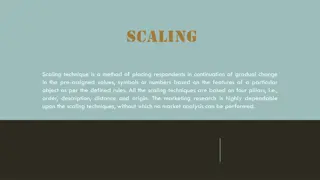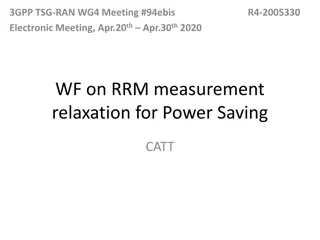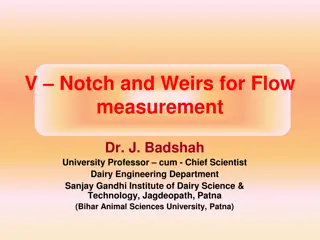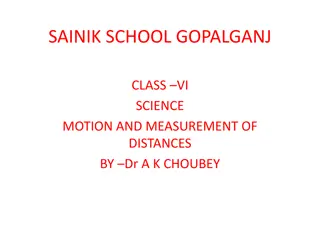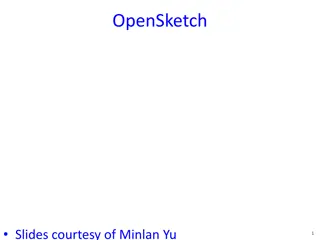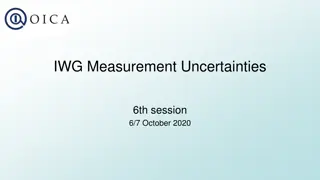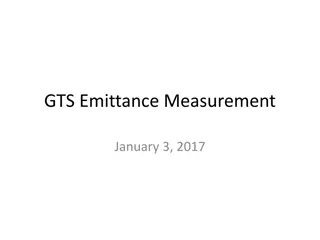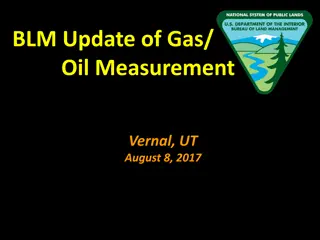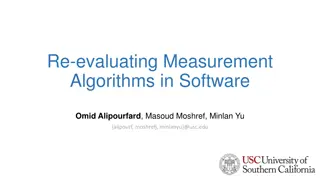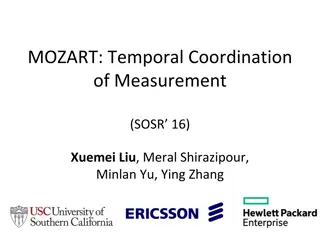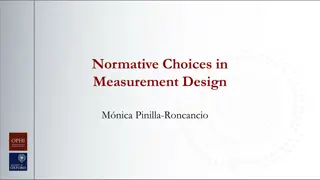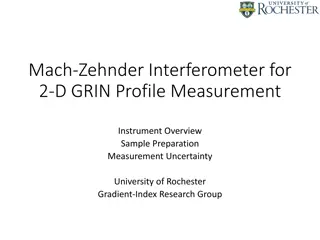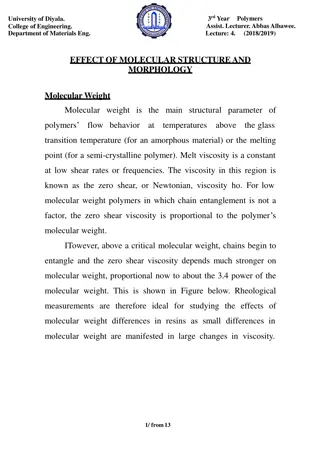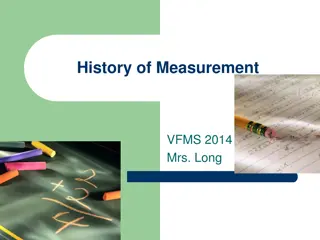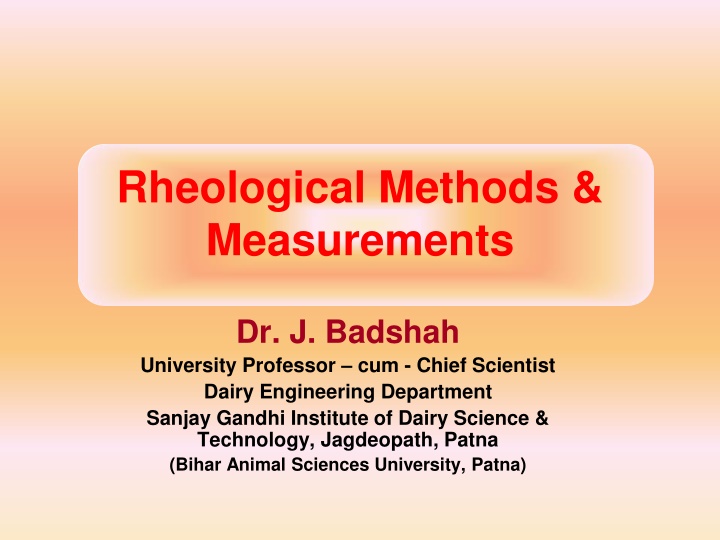
Rheological Methods and Measurements in Food Science
Explore the world of rheological methods and measurements in food science, covering viscoelastic foods, fundamental tests on solid foods, transient experiments, and creep tests conducted by Dr. J. Badshah, University Professor cum Chief Scientist at Sanjay Gandhi Institute of Dairy Science & Technology in Patna.
Download Presentation

Please find below an Image/Link to download the presentation.
The content on the website is provided AS IS for your information and personal use only. It may not be sold, licensed, or shared on other websites without obtaining consent from the author. If you encounter any issues during the download, it is possible that the publisher has removed the file from their server.
You are allowed to download the files provided on this website for personal or commercial use, subject to the condition that they are used lawfully. All files are the property of their respective owners.
The content on the website is provided AS IS for your information and personal use only. It may not be sold, licensed, or shared on other websites without obtaining consent from the author.
E N D
Presentation Transcript
Rheological Methods & Measurements Dr. J. Badshah University Professor cum - Chief Scientist Dairy Engineering Department Sanjay Gandhi Institute of Dairy Science & Technology, Jagdeopath, Patna (Bihar Animal Sciences University, Patna)
Viscoelastic Foods Both Viscous and Elastic Properties Ex.: Wheat flour dough, dairy cream, Ice-cream mix, cheese, Paneer, Aged sweetened condensed milk, Most gelled Products Wissenberg Effect: Agitating Cake batter and Bread Dough results in climbing on agitating rod Jet Expansion or Die Swell : expansion two or more times the diameter of tube
Fundamental Tests on solid foods Quasi-static and dynamic tests: The tests conducted under conditions of static/quasi-static loading are known as quasi-static tests while those conducted under dynamic loading conditions are called dynamic tests. Instron machine under compression: Quasi-static tests for elasticity, Hookean solids shows pure elastic behaviour Vibrating Device of certain frequency like 200 cycle/s: Dynamic Test, Stess or strain varies harmonically with time, Sinusoidal is one ex. Concentric cylinder, cone and plate viscometer and parallel plate viscometer in oscillating mode. If force is applied perpendicular to area defined by stress and it is calculated as modulus of elasticity(E) If modulus is calculated by applying force parallel to area defined by stress i.e. a shearing stress, then it is called a shear modulus or modulus of rigidity(G or n) and If force is applied from all directions (isotropic force) then change in volume over original volume is obtained that can be calculated by bulk modulus(B or K)
Transient Experiments STRESS RELAXATION TEST These relaxation and creep experiments are known as Transient experiments. Relaxation Test: At constant strain applied to the material, the measurement of stress as a function of time. This type of experiment is called relaxation stress and the curve is known as relaxation curve. This test is conducted in shear, uniaxial tension or uniaxial compression. In solids the stress will decay to an equilibrium values slowly but in liquid the equilibrium residual stress reaches to zero at fast rate.\ Sago Starch, Wheat flour dough, Cooked potatoes, Dehydrated apple and banana etc.
Creep Test CREEP TEST In an experiment if a constant stress is applied to sample and corresponding strain is followed as a function of time and results are expressed in terms of a parameter of compliance (J=strain/stress), the test is known as creep. The change in the strain of material can be measured, when stress is removed it known as creep curve. Biscuit dough and Rice Dough, Paneer cubes and Processed cheese etc. exibits creep test.


